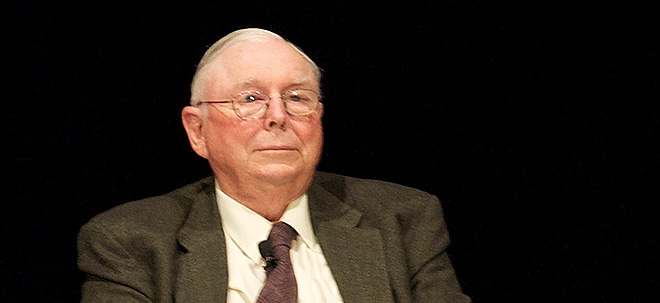Der Autor des Artikel unten, Bernie Schäfer, meint, man solle auf AMD setzen, weil kleinere Firmen (AMD hat ein MK von 14 Mrd.) die Großen (Intel hat eine MK von 131 Mrd.) gewöhnlich ausstechen. Wall Street würde die "Big Caps" durch die rosarote Brille sehen. Aus dem gleichen Grund kann man das Argument freilich auch umdrehen.
Die Short-Interest-Quote bei AMD ist hoch - 5,4 % - , was dafür spricht, dass AMD seinen hyperbolischen Anstieg wohl noch weiter fortsetzt. Dies bestätigt den hier im Thread bereits geäußerten Verdacht, es sei zu gefährlich, AMD zu shorten.
-------
Put Your Chips on David vs. Goliath
By Bernie Schaeffer
Street.com
1/24/2006 11:19 AM EST
Anyone who has read this space already knows that I'm steering clear of mega-cap names, which have generally been underperforming their smaller brethren for years despite continued fanfare across Wall Street. I firmly believe that small- and mid-caps are the sensible investment at this juncture (along with a healthy amount of cash, of course).
Look at what's happened so far this year. As of Friday's close, the Dow had given up all of its gains and was sitting at its lowest close since mid-November. The Russell 2000, on the other hand, was up more than 4% year to date despite Friday's carnage.
But enough generalizations. I've noticed as of late that not only does Wall Street tend to overlook or downplay small-caps, but when given a chance, even between two formidable companies, it will almost always prefer the stumbling, bumbling giant. This is never truer than in the case of Intel (INTC:Nasdaq) vs. Advanced Micro Devices (AMD:NYSE) . With a market cap of $14 billion, AMD is not exactly meek, but it is dwarfed by the $131 billion market cap marshaled by Intel.
Both semiconductor companies headed into the earnings confessional last week to very different results. Not only were the absolute findings different, the reaction to the results was so transparently biased that I had to laugh. Analysts' ratings ahead of the reports were comical, and the post-earning fallout was even more ridiculous. Allow me to walk you through this tale of two earnings.
Intel: The Sleeping Giant
There was no shortage of love for Intel ahead of its earnings report last Tuesday. The pentium parent boasted 30 ratings that were buy or better, along with just 12 holds and a single sell rating.
On Tuesday evening, Intel said fourth-quarter earnings rose 16% to $2.45 billion, or 40 cents a share, compared with 33 cents a share in the year-earlier period. Starry-eyed analysts, however, were expecting the company to bank 43 cents a share. The story was the same for revenue numbers, with the company posting sales of $10.2 billion, compared with analysts' expectations for $10.6 billion.
In reaction to this news, the stock gapped 11.5% lower in Wednesday's trading. But only a handful of downgrades ensued, leaving Intel with 23 buys, 19 holds and a pair of sells -- all this on a stock that has moved virtually nowhere since a short-term peak in January 2004. This one is, quite literally, a sleeping giant!
Advanced Micro Devices: Handy With a Slingshot
On the flip side, AMD wandered into the earnings confessional with 13 buy ratings, 17 holds and six sells, two of which were of the "strong" variety, according to Yahoo! Finance.
The second-largest chipmaker reported Wednesday night that its fourth-quarter net income stretched to 21 cents a share, from 8 cents the previous year. Excluding items, AMD banked 45 cents a share, well above the cautious consensus of 26 cents a share. Revenue rose 45% to $1.84 billion, easily outpacing analysts' expectations for $1.67 billion.
The stock had to be halted in after-hours trading and was indicated 12% higher early Thursday morning. But Wall Street analysts couldn't let AMD enjoy its day of prosperity and colored the news with skepticism.
Susquehanna opined that the firm will need to accelerate its market-share gains in order to drive continued growth and sustained margins. Goldman Sachs issued a downgrade on the stock, dropping it to underperform, because of valuation concerns and an "excess supply problem" in the next two years. Wall Street generally prefers companies that gain market share from a fundamental perspective. But because of a predisposed preference for Intel, market-share erosion is seen as bad for AMD, because now the "sleeping giant has awoken," said Goldman.
Currently, AMD has just 13 buy ratings, 15 holds, six sell designations and three strong sell ratings -- all on a stock that has doubled in value since its October low along with increasingly reliable support from its 10-day and 20-day moving averages.
But it isn't just Wall Street that has a rather cloudy and backward vision of this semiconductor pair. Data released late Friday indicated that short interest on AMD increased by 21% this month, leaving more than 5.4% of the equity's float devoted to the short side. Conversely, only 1% of Intel's float is sold short, amounting to a meager short-interest ratio of less than one day to cover.
Options players have followed the Street's lead. The Schaeffer's put/call open interest ratio (SOIR) for AMD stands at 1.75, with short-term puts easily outweighing short-term calls. This rating is higher than all but 6% of the past year's worth of data. But speculative players are notably sanguine on Intel, judging from the SOIR of 0.57, which resides in the 32nd annual percentile. In other words, around the earnings events of last week that saw AMD shares surge and Intel shares get hammered, there were nearly two puts for every call on AMD, while on Intel there were almost two calls for every put.
Turning to some sanity, AMD earns a Schaeffer's Equity Scorecard rating of 8.0 (in a range from zero to 10), suggesting that its upward drive is likely to continue. But bumbling Intel registers only a 4.0 on this proprietary scale, which evaluates stocks in terms of 10 powerful sentiment, technical and fundamental indicators.
If you are looking to play a major semiconductor name, I'd recommend buying AMD and ignoring (or possibly even shorting) Intel. The relative-strength performance of the pair, going back to last May, speaks volumes. |


 Thread abonnieren
Thread abonnieren



